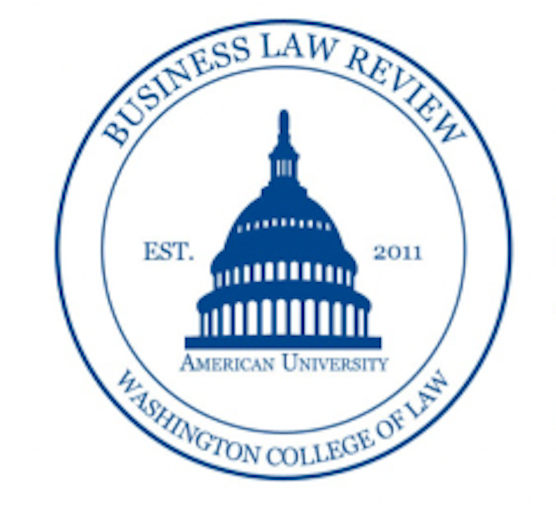 By: Leo Garonski
By: Leo Garonski
Under the Civil Aeronautics Act of 1938, Congress significantly subsidized airlines and created the Civil Aeronautics Board to prevent restraints of trade, designate airlines routes, and control seat prices.[1] The Act also required that U.S. citizens own at least three-quarters of each U.S.-based airline.[2] The U.S. airline industry inflected on cost and enforcement in the 1970s when the federal government reversed course on the regulation of U.S. airlines.[3] When the Civil Aeronautics Board informed Congress that then-in-force regulations had seriously contracted airline profits, Congress cranked back those regulations in the Airline Deregulation Act of 1978.[4] The U.S. Department of Transportation, in the 1990s, tried (unsuccessfully) to convince Congress to lower the domestic-ownership threshold.[5] A lack of expertise and uneasiness over project costs and enforcement capabilities often discourage agencies from regulating industries.[6] Further, increased regulation increases litigation burdens on agencies as they pursue well-funded industry participants.[7]
However, controversy has heated up in the American airliner industry again. In 2018 and 2019, two Boeing 737 MAX aircraft crashed due to a software error in the Boeing 737 MAX’s design.[8] During the 737 MAX’s certification process, the FAA insufficiently inspected the aircraft’s software, so the agency knew nothing about the glitch before the accidents.[9] Despite these findings, the FAA further loosened its grip of the industry by accelerating safety-issue resolution and more delegation of enforcement to airlines.[10] In 2019 and 2020, the FAA again failed to prevent manufacturing mistakes—a Boeing contractor’s failure to properly install door-plug bolts—before the part failed mid-flight on an Alaska Airlines 737.[11]
With 156,000 employees (the vast majority of which are in the United States) and a market capitalization of $81 billion, Boeing significantly contributes to the U.S. economy.[12] Meanwhile, the recent grounding of Boeing 737 aircraft could harm Boeing’s customer airlines, parts suppliers, and airline passengers.[13] For the FAA to arrest dangers tripping up the economy and Boeing’s reputation, the FAA should not overcompensate for its historic overregulation; given that federal guidelines highly value lifesaving regulations, the FAA will not struggle to justify tighter airline regulations.[14]
Centrally, the FAA can powerfully justify its safety regulations through cost-benefit analyses. Under Executive Order 12866, effective since 1993 (and as the Administrative Procedure Act permits), the U.S. Office of Management and Budget (“OMB”) favors regulations whose benefits significantly outweigh their costs.[15] Agencies must calculate all foreseeable costs and benefits of a regulation and consider practical alternatives.[16]
Key to the FAA, cost-benefit analyses factor in the lives that a regulation would save using the Value of a Statistical Life (“VSL”).[17] In so doing, the agency does not apathetically determine the overall worth of human life; instead, the FAA estimates if a regulation protects human life enough for people to accept its concurrent economic burden.[18] When a regulation would statistically “reduce risks to life,” the U.S Department of Transportation typically finds a $12.5 million benefit to the regulation.[19] The EPA values the regulation, per year of life saved, at $290,000 and $733,000 for people younger and older than 65, respectively.[20] In regulations covering commercial flights in urban areas—in which, unlike economic regulation, many lives face danger—tight FAA regulation of airline safety could produce billions of statistical dollars in benefits to the nation.[21] Following OMB calculations, the FAA can justify expensive safety regulations without fear of significant Executive Branch or industry blowback.[22]
The FAA’s regulatory environment has significantly changed since Deregulation.[23] Sixty years ago, the FAA had weaker tools for justifying regulatory costs; at that time, agencies only considered hypothetical victims’ earnings potential and excluded the values of the victims’ companionship.[24] Today, however, the FAA includes kinship value, so the agency more easily balances out the costs of safety regulations.[25] While VSL has gained importance, consumers increasingly care about flight safety.[26] Fortunately for the FAA, VSL factors in market effects from new regulations.[27] Already, the Alaska Airlines incident has reinforced the benefits of stronger airline regulation.[28] Immediately after the Alaska Airlines incident, Americans—potential passengers on American air carriers—lost more than ten percent of their trust in the firm.[29] Since 2018, Boeing has lost four percent of its market share to its main competitor, Airbus.[30] Although the Department of Transportation (the FAA’s parent) assesses regulations’ harms to consumer demand, the FAA should declare that stricter regulation of domestic aircraft manufacturing protects consumer demand as well.[31] Given the hundreds of lives lost in the 737 MAX’s 2018 and 2019 crashes, and the hundreds of lives risked in a mid-air structural failure, the FAA should state that (as an agency would put it) tighter regulations, every year, save hundreds of taxpaying adults and family relationships.[32] Therefore, given years of safety events involving American aircraft, the FAA should step back, open its toolbox, and use the new tools to fix Boeing.
[1] See Christopher McBay, Airline Deregulation Deserves Another Shot: How Foreign Investment Restrictions and Subsidies Actually Hurt the Airline Industry, 72 J. Air L. & Commerce 176–77 (2007).
[2] Id. at 176.
[3] See Airline Deregulation: When Everything Changed, Nat’l Air and Space Museum (Dec. 17, 2021), https://airandspace.si.edu/stories/editorial/airline-deregulation-when-everything-changed; McBay, supra note 1, at 176.
[4] McBay, supra note 1, at 177.
[5] Id. at 178.
[6] John Mendeloff, Does Overregulation Cause Underregulation?, 4 AEI J. on Gov’t & Soc. 47, 50 (1981).
[7] Id. at 51.
[8] Michael Laris et al., FAA’s Lax Oversight Played Part in Boeing 737 Max Crashes, but Agency Is Pushing to Become More Industry-Friendly, Wash. Post (Oct. 28, 2019, 6:00 a.m.), https://www.washingtonpost.com/local/trafficandcommuting/faas-lax-oversight-played-part-in-boeing-737-max-crashes-but-agency-is-pushing-to-become-more-industry-friendly/2019/10/27/bc0bf184-f4e1-11e9-ad8b-85e2aa00b5ce_story.html.
[9] See id.
[10] See id.; Theo Leggett, Boeing 737 Max Lion Air Crash Caused by Series of Failures, BBC (Oct. 25, 2019), https://www.bbc.com/news/business-50177788.
[11] See Clara McMichael & Meredith Deliso, 4 Bolts Missing from Alaska Airlines Door Plug Before Blow-Out: NTSB Report, ABC News (Feb. 6, 2024, 3:36 p.m.), https://abcnews.go.com/US/alaska-airlines-door-plug-ntsb-report/story?id=106992184.
[12] The Boeing Co., 2022 Annual Report 19, 22 (2023).
[13] See Jennifer Sor, Boeing’s Embarrassing 737 Max Disaster Could Hit Entire US Economy, Aviation Expert Says,Bus. Insider (Jan. 26, 2024, 11:13 a.m.), https://www.businessinsider.com/boeing-accident-737-max-flight-delay-plane-inspection-us-economy-2024-1.
[14] See Cong. Rsch. Serv., Cost-Benefit Analysis in Federal Agency Rulemaking 1 (2022) [hereinafter CRS].
[15] See id. at 1 (2022) (factoring in cost-benefit analyses when evaluating regulations’ propriety).
[16] See id. at 1–2.
[17] U.S. Off. Mgmt. & Budget, Circular No. A-4: Regulatory Analysis 49 (2024) [hereinafter Circular]; see Darren Timothy, Treatment of the Value of Preventing Fatalities and Injuries in Preparing Economic Analyses, U.S. Dep’t Transp. 1 (Mar. 2021), https://www.transportation.gov/sites/dot.gov/files/2021-03/DOT%20VSL%20Guidance%20-%202021%20Update.pdf (calculating VSL by weighing, with annual data, at a regulation’s costs and reduction in risk of death).
[18] See id.
[19] See Circular, supra note 17, at 49–50; Departmental Guidance on Valuation of a Statistical Life in Economic Analysis, U.S. Dep’t Transp. (May 1, 2023), https://www.transportation.gov/office-policy/transportation-policy/revised-departmental-guidance-on-valuation-of-a-statistical-life-in-economic-analysis.
[20] U.S. Off. Mgmt. & Budget, Memorandum to the President’s Management Council 2 (2003); CPI Inflation Calculator, U.S. Bureau Lab. Stat. (Mar. 25, 2024), https://data.bls.gov/cgi-bin/cpicalc.pl?cost1=434000.00&year1=200305&year2=202402 (adjusting for inflation).
[21] See id.
[22] See Cong. Rsch. Serv., supra note 12, at 1–2.
[23] See Darren Timothy, Treatment of the Value of Preventing Fatalities and Injuries in Preparing Economic Analyses, U.S. Dep’t Transp. 1 (Mar. 2021), https://www.transportation.gov/sites/dot.gov/files/2021-03/DOT%20VSL%20Guidance%20-%202021%20Update.pdf (“What is involved is not the valuation of life as such, but the valuation of reductions in risks.”); supra pp. 1–2.
[24] See Timothy, supra note 23, at 1–2.
[25] See id.
[26] See id. at 2.
[27] See id.
[28] Report Shows Drop in Consumer Confidence with Latest Boeing Aircraft Emergency, KING 5 NBC News (Jan. 19, 2024), https://www.king5.com/article/news/local/consumer-trust-boeing-falls-latest-aircraft-emergency-report/281-0027eab0-44ab-4dba-b972-df1fe121ccf6.
[29] See id.
[30] Sylvia Pfeifer et al., How Boeing’s Troubles Are Upsetting the Balance of Power in Aviation, Fin. Times (Jan. 28, 2024), https://www.ft.com/content/ddc28f31-e1af-4a81-8295-cbccf3141f49.
[31] See Timothy, supra note 23, at 1–2.
[32] See 4 Bolts Missing from Alaska Airlines Door Plug Before Blow-Out: NTSB Report, ABC News (Feb. 6, 2024, 3:36 p.m.), https://abcnews.go.com/US/alaska-airlines-door-plug-ntsb-report/story?id=106992184; Jennifer Sor,Boeing’s Embarrassing 737 Max Disaster Could Hit Entire US Economy, Aviation Expert Says, Bus. Insider (Jan. 26, 2024, 11:13 a.m.), https://www.businessinsider.com/boeing-accident-737-max-flight-delay-plane-inspection-us-economy-2024-1.


